How to assemble a concrete mixer?
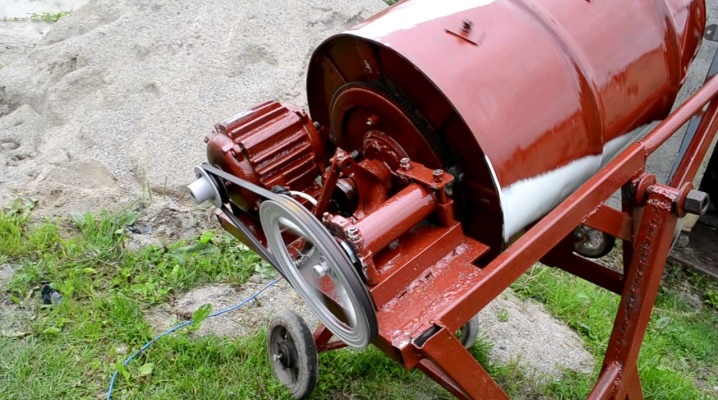
Together with the new concrete mixer, the manufacturer includes instructions for correct assembly. But it is not always in Russian, and this can cause difficulties when buying. This article will show you how to assemble a concrete mixer yourself.
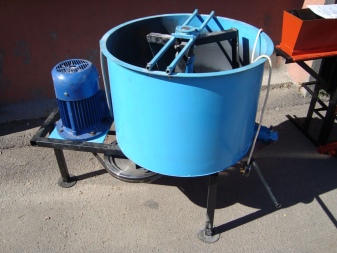
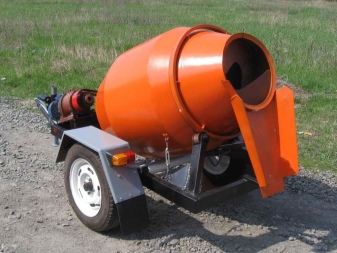
Preparation
Many concrete mixers have similar designs, so our instructions are suitable for most types of mixers.
First of all, make sure that all the components are in place - this can be learned from the instructions. Even if it is in English or another language, the details and their quantity are shown in the pictures.
Then prepare the tools:
- scissors or clerical knife (for unpacking);
- wrenches for 12, 14, 17 and 22;
- possibly a set of hexagons;
- pliers;
- Phillips screwdriver.
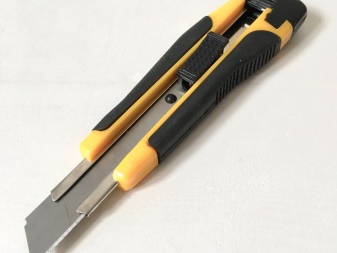
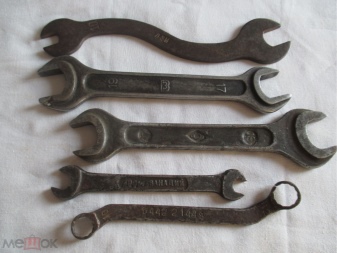
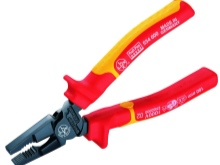
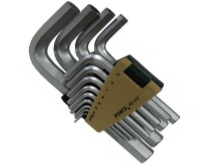
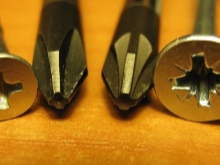
Then arrange everything so that it is convenient to work. Let's get started.
Assembly stages
Before assembling the car with your own hands, read the manual - for sure there is a scheme of work in the pictures. Even with English or Chinese explanations, this is an important source of information. If there is no such scheme, do not despair, the assembly of the concrete mixer is not difficult, and the purpose of each part is clear from the name.
You can assemble a concrete mixer yourself, but it is better if you have 1-2 assistants. They are especially useful when installing heavy parts and making final adjustments.
- Place the wheels on the triangular support and fix them with cotter pins (their ends must be unbent to the sides). There must be a washer between the cotter pin and the wheel. Make sure the wheels are well lubricated.
- Fix the frame (tripod) to the support. It is symmetrical, so it doesn't matter which side you put it on. If its ends are different, the triangular support should be on the engine side. The part is secured with bolts, nuts and washers.
- Place a support arm (straight leg) on the other side of the tripod. It is also bolted, there will be no problems with it. The concrete mixer frame is assembled. It's time to move on to the drum.
- Place the lower forecastle on the frame together with its support. It is difficult to put it on your own, and this is where assistants are needed. If not, detach the forecastle from the support and place these parts separately on the frame. As a rule, they are secured with the largest bolts.
Important! Orient the component correctly - the ends of the forecastle support are different. On one side, a drive sprocket with a drive shaft is installed on it, which should be located on the side of the wheels.
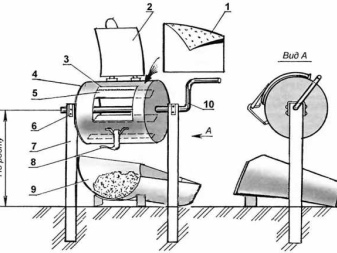
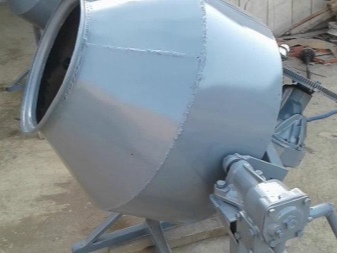
Place the blades inside the forecastle. Their V-shaped bend should be directed towards the rotation of the tank (usually clockwise).
- Place the O-ring on the upper forecastle. Fix it with screws or pins. If there is no ring, coat the lower forecastle at the place of the future joint with sealant (it should be included in the kit). Check the expiration date.
- Place the upper forecastle on the lower one (it is also better to do this with helpers). It is secured with screws or bolts and nuts. There are usually arrows on the lower and upper tanks - they should match when installed. If there are no arrows, the mounting holes on the blades and the upper forecastle must match.
- Attach the inner blades to the upper forecastle.
- Install the tilt angle lock on the side of the straight support. It is secured with bolts, lock washers and nuts.
- At the outlet end of the forecastle support, install the swing handle (swivel wheel, "rudder"). To do this, put a spring in its lower hole, align the holes on the "steering wheel" and the retainer, then fix the swivel wheel with bolts with two nuts.
Important! The "rudder" should rotate freely. To do this, do not tighten the first nut completely. Tighten the second well - it should counter the first. After assembly, check that the wheel rotates easily but does not wobble.
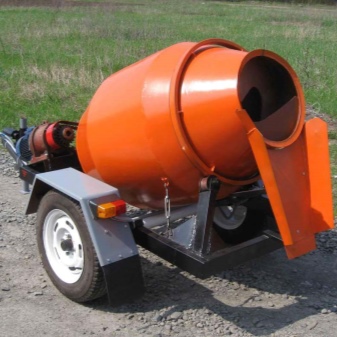
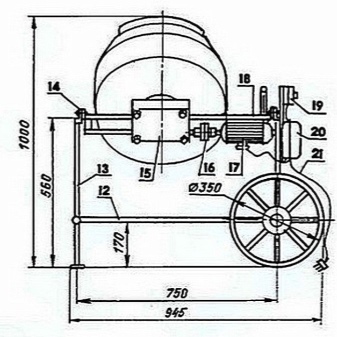
Mount the motor on the triangular support. It can be installed directly into the case or be detached. If the motor is already in the housing, it is simply put into place. Before installation, put the drive belt on the pulleys, and then tighten the fasteners.
If the motor is supplied without a housing, do the following:
- fasten half of the protective cover;
- put the driven pulley on the protruding end of the shaft (it is fastened with cotter pins or a key);
- install the engine support on the bolts (do not tighten the fastening too much);
- put the drive belt on the pulleys, then secure the motor.
In both cases, before the final tightening, you need to adjust the belt tension by moving the electric motor. It should not be too tight, but no sagging is allowed.
Next, connect the power cables. Fit a protective cover if necessary.
That's it, the new concrete mixer is assembled. We hope you have no spare parts left.
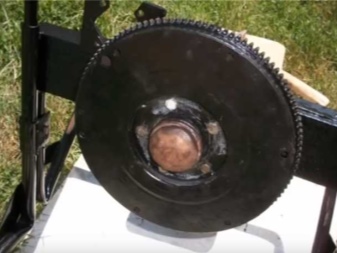
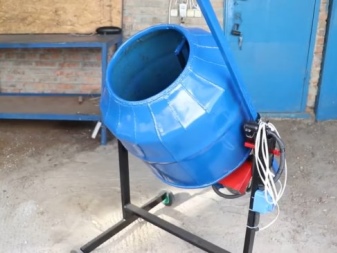
Advice
Although the assembly of the mixer is not difficult, a number of points are needed.
- The main advice is to always follow safety precautions. Use the keys carefully and do not use too much force when assembling. This will save not only the mechanisms, but also you.
- Check the presence of oil in all moving parts. Often the plant covers them not with a lubricant, but with a preservative. Then it must be removed, after which the joints must be lubricated with industrial oil or grease.
- Before tightening the nuts, coat the threads with machine oil. It will protect from corrosion, and it will be easier to disassemble later. The main thing is that there should not be too much of it, otherwise dust and dirt will stick to the thread.
- It is best to keep the heads of the bolts in one direction. This will facilitate assembly and control of the connections.
- Tighten adjacent bolts evenly, without skewing the part.
- After assembly, be sure to check all threaded connections - they must be securely tightened.
- Before using for the first time, check the insulation of the motor. To do this, measure the resistance between one of the terminals and the case with a multimeter - it should be infinite. The check will take a little time, and no one is insured against manufacturing defects.
- You need to connect the machine through an RCD (residual current device) or a circuit breaker. Then the likelihood of fire from a short circuit is minimized.
- After work, clean the mixer from the cement and check the connections. It is not excluded that some of them have been promoted.
Remember that the more frequent these checks, the higher the chance of trouble-free operation, less downtime for repairs and, as a result, higher revenues.
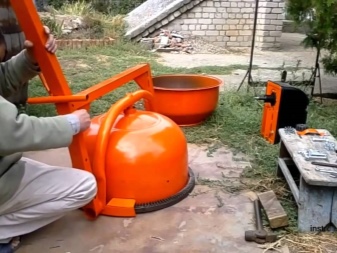
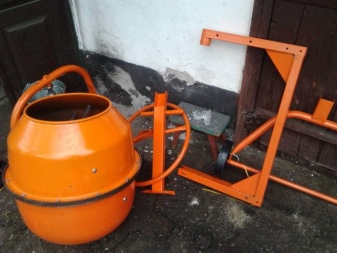
How to assemble a concrete mixer, see the video below.













The comment was sent successfully.